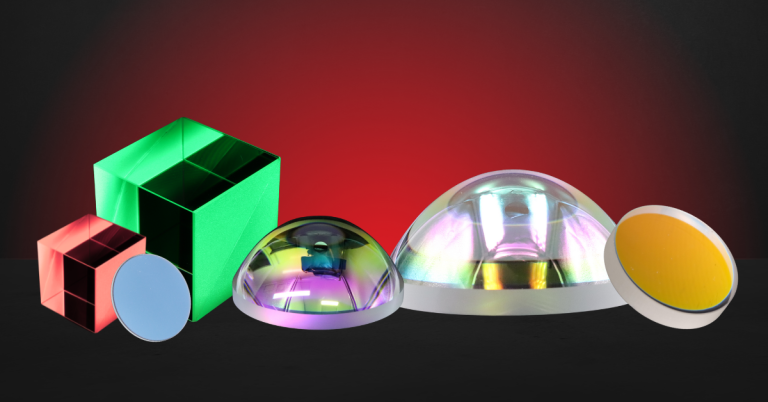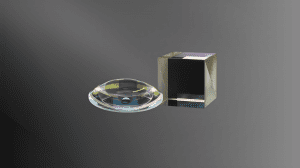What Are Laser Optics Used For?
Laser optics are specialized components that control, manipulate, and transmit laser light with high precision. Unlike standard imaging optics, laser optics are engineered to withstand high power laser beams, operate near the diffraction limit, and support the unique requirements of CW lasers, pulsed lasers, fiber lasers, CO2 lasers, and YAG lasers.
From hospitals to factories to research labs, these components enable innovation across multiple industries. Below, we explore the main applications of laser optics, their benefits, and real-world use cases.

Medical Applications
Lasers have transformed modern medicine, and laser optics make these breakthroughs possible.
- YAG lasers are widely used in ophthalmology for procedures such as posterior capsulotomy and peripheral iridotomy.
- CO2 lasers deliver high precision in dermatology and surgical applications, including tumor removal and skin resurfacing.
- Fiber lasers are gaining traction in minimally invasive surgeries due to their flexible delivery systems.
Benefits:
- High precision and minimal tissue damage
- Reduced recovery times
- Ability to target extremely small areas with controlled laser beams
Industrial Manufacturing
In manufacturing, lasers are indispensable for cutting, welding, drilling, and marking — and laser optics ensure accuracy and durability under extreme power conditions.- CO2 lasers are the standard for cutting metals, plastics, and textiles.
- Fiber lasers excel in welding and precision micromachining of metals.
- Laser lenses and line optics focus and shape beams for tasks like laser cutting of automotive parts or semiconductor processing.
- Non-contact, high-speed processing
- Ability to handle a wide range of materials
- Long-term cost savings due to precision and efficiency
Scientific Research
Laser optics enable experiments at the forefront of physics, chemistry, and materials science.- BBO crystals are essential for nonlinear optics, enabling frequency doubling and parametric generation in ultrafast lasers.
- Single mode CW lasers are used in spectroscopy for studying molecular structures.
- Ultrashort pulse lasers require specially designed broadband optics to handle their wide spectral range.
- High accuracy for data collection
- Access to new wavelengths for advanced studies
- Support for cutting-edge research in quantum optics and nanotechnology
Defense and Aerospace
In defense and aerospace, energy lasers are being developed for targeting, guidance, and even directed-energy weapons. Here, laser optics must meet the strictest durability and performance standards.- High power YAG lasers are deployed for range finding and targeting.
- Fiber lasers are researched for next-generation missile defense systems.
- Non-polarizing beamsplitters and polarizing optics are critical in laser communication and tracking systems.
- Superior precision and reliability in mission-critical environments
- Capability to operate in extreme conditions
- Expanding use of lasers for secure communications and defense systems
Telecommunications
The global communications industry relies heavily on fiber lasers and laser optics.- Laser diodes transmit data through fiber-optic cables, supported by precision collimating and focusing optics.
- Diffraction-limited laser beams enable high-bandwidth, long-distance transmission.
- Single mode optics ensure signal clarity with minimal distortion.
- Faster, more reliable data transfer
- Ability to handle massive global communication networks
- Enabling technology for 5G, cloud computing, and beyond
What Are Laser Optics Used For? – A Final Overview
From CO2 lasers in industrial cutting to YAG lasers in surgery and fiber lasers in global telecom, laser optics are the key enablers behind some of today’s most advanced technologies.
At Avantier, we design and manufacture custom and standard laser optics — including lenses, filters, beamsplitters, and nonlinear crystals like BBO and YAG — tailored to your application.
👉 Explore our Laser Optics Solutions or Contact Us today to discuss your project.
Frequently Asked Questions
1. How are laser optics different from standard imaging optics?
Laser optics are designed for high power lasers and precision beam control, often near the diffraction limit. Unlike standard imaging optics, they feature superior surface quality and specialized optical coatings to handle intense laser beams without damage.
2. What industries use laser optics the most?
Laser optics are widely used in:
- Medical applications such as surgery with YAG lasers and dermatology with CO2 lasers
- Industrial manufacturing, including laser cutting, welding, and micromachining
- Scientific research, especially nonlinear optics with BBO crystals
- Defense and aerospace for targeting and energy laser systems
- Telecommunications with fiber lasers and laser diodes for data transfer
3. Can laser optics be customized for specific applications?
Yes. At Avantier, we specialize in custom laser optics — including laser lenses, beamsplitters, filters, and crystals — tailored for your specific design needs. Whether for medical lasers, industrial CO2 lasers, fiber lasers, or defense systems, we provide precision-engineered solutions from prototype to production.
Related Content
GREAT ARTICLE!
Share this article to gain insights from your connections!






